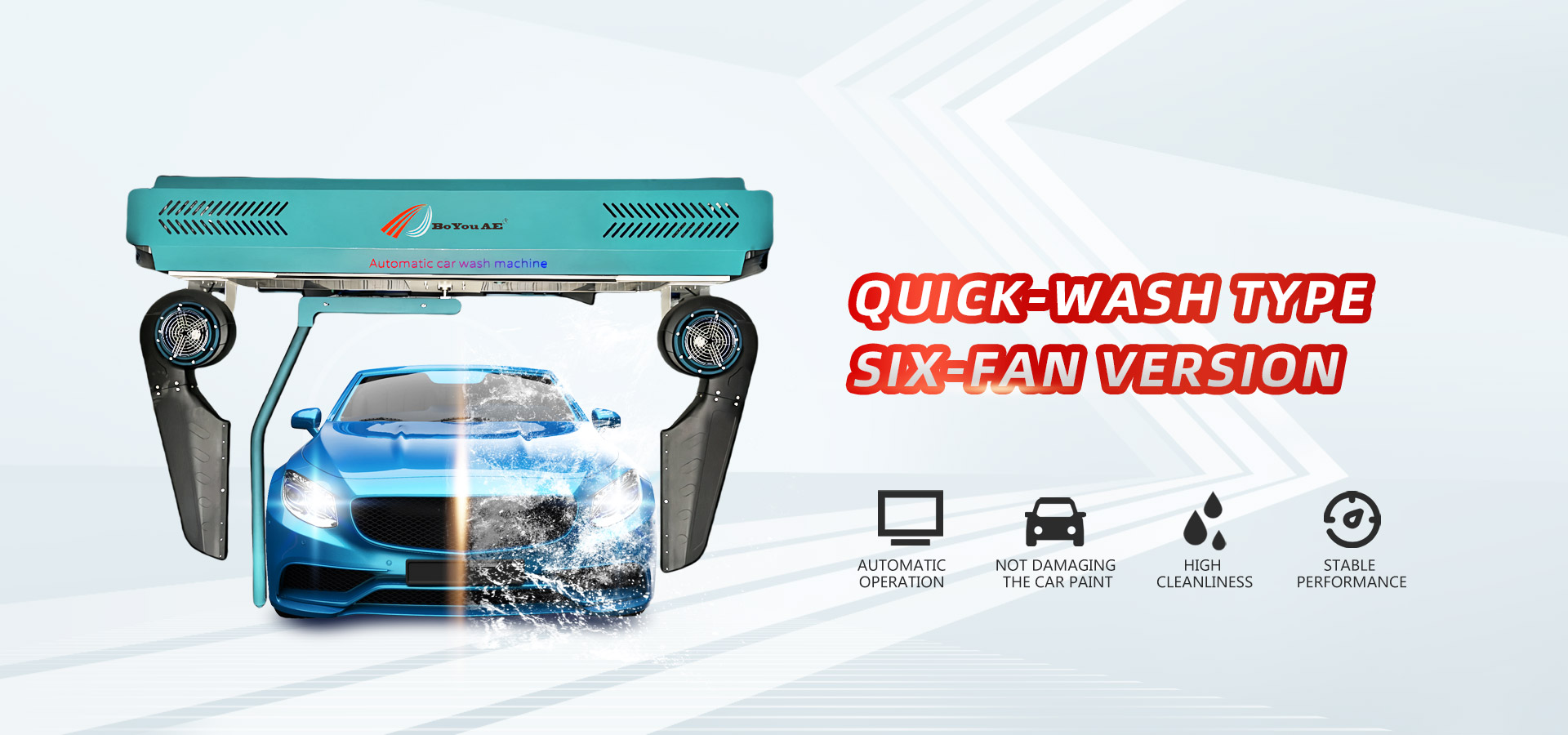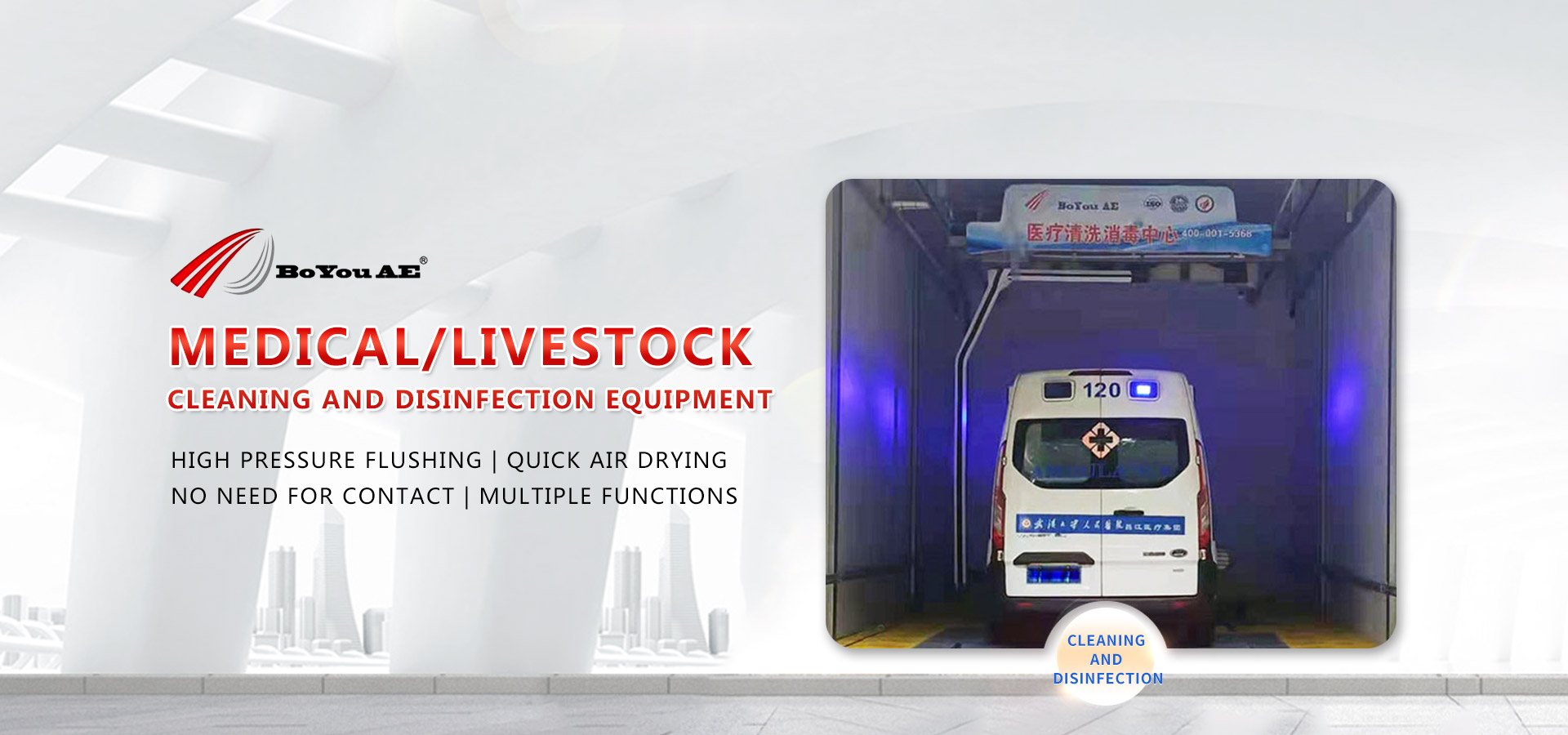Ambulance disinfection used to rely on manual use of chemical disinfectants. In daily ambulance disinfection, a chlorine containing disinfectant solution is used to wipe the interior surfaces of the carriage, door and window handles, car and stretcher handrails, stretcher surfaces, seats, floors, etc. After wiping twice with disinfectant, wait for 15 to 30 minutes for the chemical agent to fully exert its effect, and then wipe again with clean water
This method relies on personnel and has a complex program. The US Centers for Disease Control and Prevention recommends the use of non-contact disinfection technology in their pre hospital emergency guidelines. You can detach people from it.
Zhucheng Boyou'sAmbulance cleaning and disinfectionThe equipment adopts non-contact vaporization hydrogen peroxide technology. Among various disinfection and sterilization technologies, the sterilization performance of liquid hydrogen peroxide has long been recognized. However, liquid hydrogen peroxide sterilization requires a longer contact time to achieve the effect of killing microorganisms.
The sterilization mechanism of vaporized hydrogen peroxide is the same as that of liquid hydrogen peroxide, but vaporized hydrogen peroxide has better sterilization effect than liquid hydrogen peroxide. This is mainly because vaporized hydrogen peroxide can generate free hydroxyl groups, enhancing the chance of contact with microorganisms. Therefore, lower concentration gaseous hydrogen peroxide has higher sterilization ability than higher concentration liquid hydrogen peroxide.
At present, vaporized hydrogen peroxide sterilization technology has become a recommended method in pharmacopoeias and disinfection and sterilization technical specifications of various countries. The sterilization process is very mature, with good repeatability, and specialized chemical and biological indicators to verify the uniform distribution of hydrogen peroxide gas and the level of sterility assurance. And the disinfection gas is output through the pipeline, without the need for personnel to enter the polluted environment, and can be operated automatically.
This method relies on personnel and has a complex program. The US Centers for Disease Control and Prevention recommends the use of non-contact disinfection technology in their pre hospital emergency guidelines. You can detach people from it.
Zhucheng Boyou'sAmbulance cleaning and disinfectionThe equipment adopts non-contact vaporization hydrogen peroxide technology. Among various disinfection and sterilization technologies, the sterilization performance of liquid hydrogen peroxide has long been recognized. However, liquid hydrogen peroxide sterilization requires a longer contact time to achieve the effect of killing microorganisms.
The sterilization mechanism of vaporized hydrogen peroxide is the same as that of liquid hydrogen peroxide, but vaporized hydrogen peroxide has better sterilization effect than liquid hydrogen peroxide. This is mainly because vaporized hydrogen peroxide can generate free hydroxyl groups, enhancing the chance of contact with microorganisms. Therefore, lower concentration gaseous hydrogen peroxide has higher sterilization ability than higher concentration liquid hydrogen peroxide.
At present, vaporized hydrogen peroxide sterilization technology has become a recommended method in pharmacopoeias and disinfection and sterilization technical specifications of various countries. The sterilization process is very mature, with good repeatability, and specialized chemical and biological indicators to verify the uniform distribution of hydrogen peroxide gas and the level of sterility assurance. And the disinfection gas is output through the pipeline, without the need for personnel to enter the polluted environment, and can be operated automatically.







 扫一扫,查看手机站
扫一扫,查看手机站 